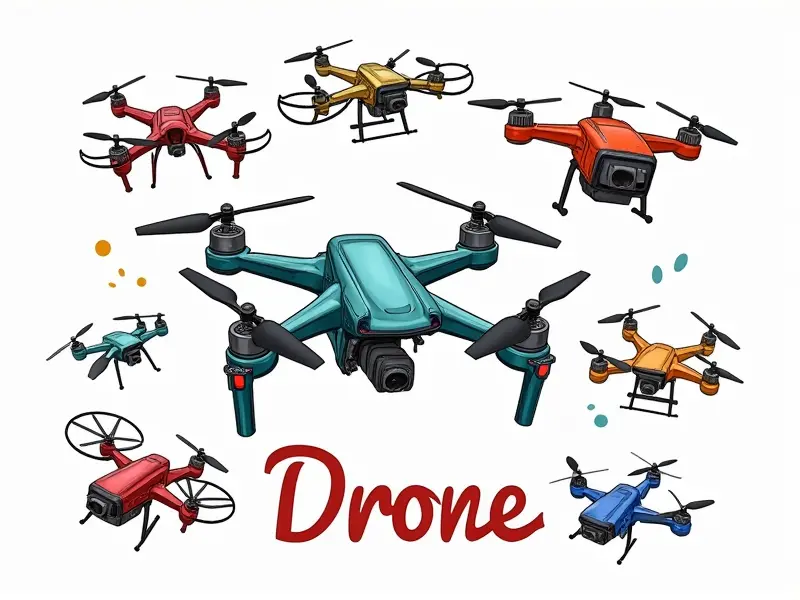How far can FIMI drones go?

How Far Can FIMI Drones Fly?
FIMI drones are renowned for their advanced features and impressive performance, but one of the most frequently asked questions by drone enthusiasts is about their range. The maximum flying distance of a FIMI drone can vary based on several factors such as battery capacity, environmental conditions, and the presence of obstacles like buildings or trees.
Max Range of FIMI Drones Explained
The max range for FIMI drones is typically advertised by the manufacturer. For instance, models like the FIMI X8 SE boast a maximum flight distance of around 7 kilometers in optimal conditions. However, this figure can be significantly reduced if you're flying over challenging terrain or under adverse weather conditions.
Unleashing the Range of Your FIMI Drone
To get the most out of your FIMI drone's range, it’s crucial to understand how various factors influence its performance. Ensuring that your drone is fully charged and operating in a clear area without obstructions can help you achieve the advertised maximum flight distance.
Optimizing Battery Life
- Battery Capacity: A higher-capacity battery will allow for longer flights. Check if there are extended batteries available for your model.
- Efficient Flight Patterns: Flying in a straight line or at a constant altitude can help conserve energy and extend flight time.
FIMI Drone Flight Distance: Key Factors
The distance that FIMI drones can fly is influenced by several key factors, including battery life, signal strength, environmental conditions, and the presence of obstacles. Understanding these elements will help you maximize your drone's range.
Battery Life
One of the most critical aspects affecting flight distance is the battery capacity. A fully charged FIMI drone can typically fly for around 25-30 minutes, depending on the model and conditions.
Signal Strength
The strength of the signal between your controller and the drone plays a significant role in determining its range. Interference from buildings or other electronic devices can weaken this connection, reducing flight distance.
Environmental Conditions
- Weather: Windy conditions can significantly reduce battery life and limit how far your drone can fly.
- Terrain: Flying over hilly or forested areas will require more energy, reducing the overall range of the drone.
Beyond the Horizon: FIMI Drone Range
Flying a FIMI drone beyond its advertised range can be risky and may lead to signal loss or battery depletion. Always keep an eye on your drone's telemetry data, such as remaining flight time and distance from the controller.
Flight Planning Tools
Leveraging advanced planning tools like DJI GS Pro or similar software can help you visualize your flight path and ensure that you stay within safe limits. These tools provide real-time feedback on battery life and signal strength, helping you avoid potential issues.
FIMI Drone's Maximum Flying Range
The maximum flying range of a FIMI drone is typically determined by the manufacturer based on optimal conditions. For example, the FIMI X8 SE has a stated range of up to 7 kilometers in clear skies and without any obstructions.
Real-World Limitations
In real-world scenarios, achieving this maximum range can be challenging due to various factors such as signal interference from buildings or trees. It's essential to test your drone under different conditions to understand its true capabilities.
Exploring the Boundaries with FIMI Drones
To fully explore the boundaries of what your FIMI drone can do, it’s important to experiment and learn about its limitations in various environments. This hands-on approach will give you a better understanding of how far your drone can fly under different conditions.
Testing Different Environments
- Urban Areas: Test your drone's range in an urban setting with tall buildings and dense traffic.
- Rural Settings: Explore how the drone performs over open fields or forests, noting any differences in flight distance.
Fimi Drone Range and Its Implications
The range of your FIMI drone has significant implications for its usability. Whether you're using it for photography, surveying, or other applications, understanding the limits can help you plan more effectively and avoid potential issues.
Photography Applications
For aerial photography, knowing the maximum distance allows you to capture expansive landscapes without losing signal or battery power prematurely. This knowledge is crucial for creating stunning panoramic shots.
Fimi Drone Flight Limitations Revealed
The limitations of FIMI drones are primarily related to their technical specifications and environmental conditions. By understanding these constraints, users can better manage expectations and optimize performance.
Technical Constraints
- Battery Capacity: Limited battery life restricts the drone's operational time and range.
- Signal Interference: Obstacles like buildings or trees can weaken the signal, reducing effective range.
Fimi Drone Maximum Flying Distance
The maximum flying distance of a FIMI drone is an important metric for users to consider. While manufacturers provide estimates based on ideal conditions, real-world performance may vary significantly due to environmental factors and battery capacity.
Maximizing Range Tips
- Choose Optimal Locations: Fly in open areas with minimal obstructions for better range.
- Monitor Telemetry Data: Keep an eye on your drone's telemetry data to avoid unexpected issues.
FIMI Drone Range vs. Other Brands
When comparing FIMI drones with other brands, it’s important to consider the range specifications provided by each manufacturer. While some models may offer longer ranges under ideal conditions, real-world performance can vary widely due to environmental factors.
Comparison Table
| Drones | Maximum Range (km) | Battery Life (min) |
|---|---|---|
| FIMI X8 SE | 7 | 25-30 |
| DJI Mavic Air 2 | 10 | 34 |
| Hubsan X4 H107D | 5 | 8-10 |
Conclusion
The range of FIMI drones is a critical factor for users to consider when planning their aerial activities. While the advertised maximum range provides a starting point, real-world performance can vary significantly based on environmental conditions and technical limitations. By understanding these factors and experimenting with different scenarios, you can maximize your drone's capabilities and achieve optimal results in various applications.

